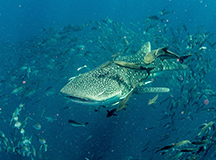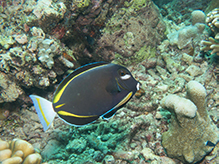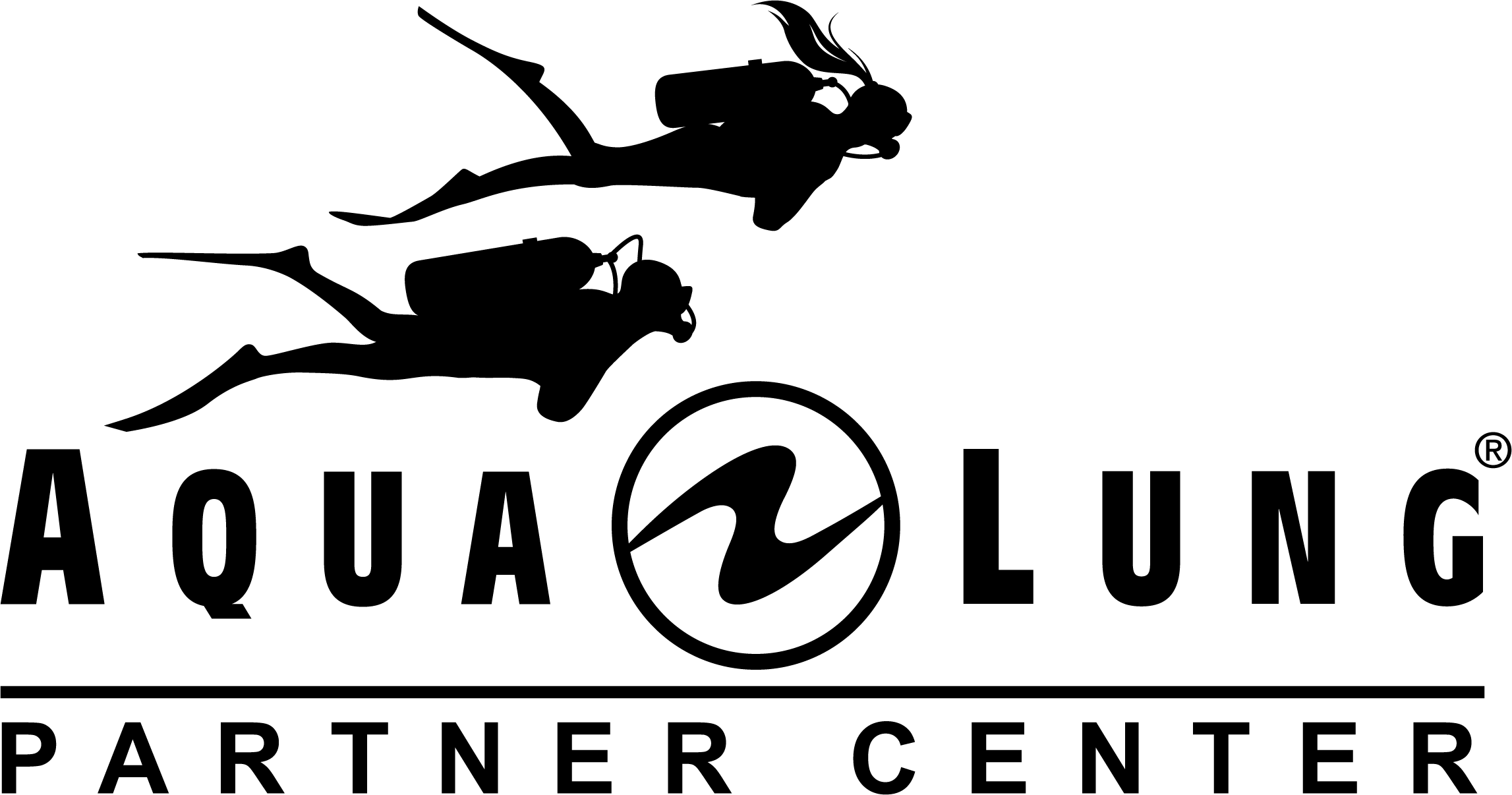IN SUMMARY
What is snorkeling?
Snorkeling, also called PMT (fins-mask-snorkel) or snorkeling, is an activity which consists in observing the seabed from the surface of the water using a mask, a snorkel, and generally palms. The mask allows you to see clearly underwater, the snorkel to breathe while having your face submerged, and the fins to move in the water with more power and control. Snorkeling is an accessible activity that does not require specific training or considerable physical effort.
For those who wish, the next step is the practice of apnea, which allows diving under the surface of the water. By moving a few meters underwater, you fully immerse yourself in the underwater world, and benefit from the best angles to admire underwater flora and fauna.
For more information you can watch the video below
Label
In order to preserve this magnificent and fragile eco-system, please do not stand on the corals or pick up souvenirs when you explore the snorkeling sites of Koh Tao.
In order to preserve this magnificent and fragile eco-system, please do not stand on the corals or pick up souvenirs when you explore the snorkeling sites of Koh Tao. Contact with coral should be avoided as much as possible, since even block corals are fragile. For these reasons, when exploring tropical or other natural sites, do not touch corals or anything else. Remember, "watch but don't touch" when snorkeling. Interaction and contact with marine life during encounters can also be another safety issue. Some creatures, such as moray eels, can hide in crevices and coral holes and bite your fingers in response to excessive stress.
Safety
Some commercial snorkeling organizations require that divers wear an inflatable lifejacket on their site, similar to personal flotation devices. They are generally bright yellow or orange and have a device that allows users to inflate or deflate the vest to adjust their buoyancy. However, these devices hamper and prevent a snorkeler from diving freely at any depth. Particularly in cooler waters, a diving suit of appropriate thickness and cover can be worn; diving suits offer a certain buoyancy without offering as much resistance to submersion. In the tropics,
The greatest danger for snorkelers is that of coastal boats and pleasure craft such as jet skis, speed boats and others. A snorkel is often immersed in water with only the tube visible above the surface. As these boats can navigate in the same areas as snorkelers, there is a risk of accidental collision. Sailboats and windsurfers represent a particular danger because their silent propulsion system may not alert the snorkel of their presence. A snorkel can surface and / or be struck by a boat. Few places delimit small boat areas from snorkeling areas, unlike what is done for ordinary beach swimmers who have areas marked with buoys
Another concern is dehydration. It is strongly recommended that you hydrate yourself before entering the water, especially if you plan to snorkel for several hours. Proper hydration also helps prevent cramps. Divers who hyperventilate to prolong their stay under the surface of the water may suffer from hypocapnia (decrease in the concentration of carbon dioxide in the blood) if they hyperventilate before diving. This in turn can cause a "shallow water failure". Snorkeling with a buddy and being aware of the buddy's condition at all times can help avoid these difficulties
The backs, ankles and back of the thighs of divers can be exposed to the sun for long periods and can burn severely (even if they are slightly submerged), without being noticed in time. Wearing an appropriate cover, such as a "rash guard" with SPF (in warmer waters), a t-shirt, a diving suit, and especially "waterproof" sunscreen, will reduce this risk.
Ecology
When snorkeling on or near coral reefs, care should be taken to avoid contact with delicate (and sometimes sharp or pungent) coral and its toxic inhabitants, usually by wearing protective gloves and pay attention to its environment. Coral scrapes and cuts often require specialized first aid and possibly emergency medical treatment to avoid infection. Boots and surf shoes are particularly useful as they allow you to walk on exposed reefs at low tide, to access drop-offs or to the deeper waters of outer reefs - practices that are, however, considered ecologically irresponsible.
The sites of Koh Tao
Koh Tao is a small island 7km long by 3km wide. About 22 km of coastline, twenty bays with or without beach and more than 45 scuba diving sites ... The island offers magnificent snorkeling and scuba diving sites all around. Here is a list of the most frequently visited spots.
Bays and beaches of Koh Tao
Mae Haad Bay
Mae Haad Bay is a good place to buy Thai souvenirs, beach clothes, beach games and handmade jewelry. There are dive equipment stores where you can buy everything from masks and fins for snorkeling to the latest diving equipment. There are also local shops and fresh market stalls where you can find tropical fruits and local ingredients. An interesting place for snorkeling in Mae Haad Bay is the wreck of the ship that sank in 1962, located at the southern end of the bay. There are usually a lot of fish here and you can be accompanied by a huge school of fusiliers as well as by the blue dot rays and sweetlips that hide in the surroundings. Getting around Koh Tao on foot from Mae Haad Bay is safe and easy, but be careful on the main roads. Go north to Sairee Beach if you're looking for crowds and convenience, or go south to Sai Nuan Beach for a "return to nature" and its peaceful simplicity, reminiscent of Koh Tao of yesteryear. A small brick beach road without cars, just a few bikes, will take you to Sairee Beach, while a walkway along the southwest coast will take you to Jansom Bay and Sai Nuan Beach in under an hour . to Sai Nuan Beach for a "return to nature" and its peaceful simplicity, which reminds Koh Tao of yesteryear. A small brick beach road without cars, just a few bikes, will take you to Sairee Beach, while a walkway along the southwest coast will take you to Jansom Bay and Sai Nuan Beach in under an hour . to Sai Nuan Beach for a "return to nature" and its peaceful simplicity, which reminds Koh Tao of yesteryear. A small brick beach road without cars, just a few bikes, will take you to Sairee Beach, while a walkway along the southwest coast will take you to Jansom Bay and Sai Nuan Beach in under an hour .
An interesting place for snorkeling in Mae Haad Bay is the wreck of the ship that sank in 1962, located at the southern end of the bay. There are usually a lot of fish here and you can be accompanied by a huge school of fusiliers as well as by the blue dot rays and sweetlips that hide in the surroundings.
Getting around Koh Tao on foot from Mae Haad Bay is safe and easy, but be careful on the main roads. Go north to Sairee Beach if you're looking for crowds and convenience, or go south to Sai Nuan Beach for a "return to nature" and its peaceful simplicity, reminiscent of Koh Tao of yesteryear. A small brick beach road without cars, just a few bikes, will take you to Sairee Beach, while a walkway along the southwest coast will take you to Jansom Bay and Sai Nuan Beach in under an hour .
Saïree Beach
Located on the west coast of Koh Tao, Saïree Beach stretches for almost two kilometers, it is the largest and most popular beach with a very lively nightlife
Sairee beach is the ideal place to spend the day if you do not have means of transport. There is a coral reef only a few tens of meters from the shore to practice snorkeling but watch out for the longtail boat. With lots of sand and shallow waters, Sairee Beach is ideal for families with children. In the evening, you can relax with a drink in front of Koh Tao's fabulous sunsets.
Freedom Beach
Too bad the beach of freedom has become paid, it must now count 100 THB to access it. It is a charming little beach covered with white sand and well shaded by Pemphis Acidula. The beach is a very good place to relax and practice snorkeling. Freedom Beach is a very beautiful site where the water is often clear, which makes it a wonderful spot for swimming and snorkeling. The coral reef is near the beach and you can see Buddha Rock, a rock resembling Buddha.
Diving and Snorkeling at Freedom Beach
Location: north of Koh Tao
Depth: 5 m on average / 16 m maximum
Rating: beginners to experienced divers
Commonly called Buddha Rock (referring to the shape of the rock) it is a natural pool for all small fish, rays and other sharks.
Mango Bay
Mango Bay is located in the North of Koh Tao and is one of the most popular diving destinations because the bay is shallow, making it easy to do snorkeling, first dives and other courses for beginners. Difficult to access by road and very expensive by taxi, it is best to access it by boat.
If the winds allow it, Mango Baie is a destination of choice. This bay is very easy to explore with palm mask and snorkel. The reef stretches all around the bay, so you don't have to look too hard to find beautiful reefs. If you are lucky, you can spot some seahorses or other mantis in the sand.
Diving and Snorkeling in Mango Bay
Location: north of Koh Tao
Depth: 5 m on average / 16 m maximum
Diving level: beginners to experienced divers
Natural fish tank for all small fish, Mango Bay has reefs on its east and west sides, and in between coral reefs forming what is today called a “coral garden”. This bay is perfect for snorkeling and for novice divers, who can gradually transition from a sandy bottom in shallow waters to deeper waters with rocky outlines. Many tour operators based on neighboring islands show Mango Bay for its beauty and original purity.
Hin Wong Bay
Located on the east coast of Koh Tao, Hin Wong is a large bay surrounded by rocks with a very nice small sandy beach. there is a lot to see here in PMT and you could spend a whole day exploring the bay.
Several underwater pinnacles covered with fertile coral, anemones and many kinds of fish can be seen here. Due to the rock formations, it is difficult to walk in Hin Wong Bay, which is why it is advisable to hire a kayak to get around. Cross the area in front of the beach on the south side of the bay, this is one of the best places for snorkeling in Koh Tao. The water there is incredibly clear and you may have the chance to see large schools of sardines chased by hungry trevally in water less than a meter deep. Another great place for snorkeling is a point north of the bay. Again, there are many well-preserved corals and abundant marine life. Hin Wong Bay is a quiet getaway and you can get there by road or by boat. If you feel like walking, it takes about an hour from the Sairee junction.
Diving and Snorkeling in Hin Wong Pinnacle
Location: on the east coast of Koh Tao
Depth: 12 m on average / 26 m maximum
Dive level: beginners to experienced divers
Less explored, the dive sites on the East coast offer a variety of marine life different from that of the coast Where is. These pinnacles at depths of 26 meters are home to blue sponges, sea fans and sea whips. It is also possible to see a hawksbill turtle hidden in its ledge as well as porcupine fish and angel fish.
Tanote Bay
Tanote Bay is a pretty bay protected from the elements, it is a bay of choice for snorkeling. The reef drops from about 2 meters below sea level to about 18 meters. There is a wide variety of fish there. The most common are angelfish, butterflyfish, groupers, anemone fish, blue-tailed ribbon-tailed rays and sometimes, the hawksbill turtle. After a great experience, you can swim to the middle of the bay where you can get your adrenaline pumping up by jumping from a huge rock.
Diving and Snorkeling in Tanote
Location: on the east coast of Koh Tao
Depth: 10 m on average / 22 m maximum
Dive level: beginner to experienced divers
Less explored, the dive sites on the East coast offer a variety of marine life different from that of the coast Where is. These pinnacles, 22 meters deep, are home to blue sponges, gorgonians and sea whips. You can also see a hawksbill turtle hidden in its ledge, as well as porcupine and angelfish.
Aow Leuk Bay
Aow Leuk is a large beautiful bay, perfect for swimming, snorkeling and sunbathing. On both sides of the bay, there are magnificent fringing reefs where amazing fish live such as butterflyfish, Monacle bream, nudibranchs, Jenkins rays, saddleback clownfish and even , occasionally, lion fish.
Aow Leuk is located at the southern end of Koh Tao, so you can discover another quieter side of the island and escape the hustle and bustle of Mae Haad and the village of Sairee. You can reach this place by road, by boat or by long tail (water taxi).
The bay of Aow Leuk, which slopes gently from the beach, is bordered by magnificent coastal reefs which extend to the sea. Besides the richness of its marine biodiversity, the general good health of the bay has been recognized as a privileged place for local ecologists who install artificial reefs and nurseries there, notably as part of the island's electrified reef project aimed at stimulating the growth of corals. At certain times of the year, it is also possible to swim with baby black tip reef sharks in the shallows, usually less than a meter from the surface.
Diving and Snorkeling in Aow Leuk
Location: south-east of Koh Tao
Depth: 6 m on average / 12 m maximum
Diving level: beginners to experienced divers
Bay offering sumptuous landscapes, Aow Leuk shelters a young and abundant marine population. Sheltered from strong winds, this shallow dive site has a sandy bottom inhabited by garden eels, scorpion fish and groundfish. The scattered coral beds are populated by butterflyfish, sergeant-majors, and schools of yellow-tailed barracudas.
Shark Bay
Shark Bay, also known as Haad Tien Beach, at the southern end of Koh Tao, is a hot spot for the most part, due to its name "Shark". It is one of the few places in Koh Tao where you are likely to spot a shark. But don't worry, these are mostly small black tip reef sharks. They are incredible to see in the water! You might even spot a very large green turtle. The reef is quite shallow, so this place is a common place for divers. You can access Shark Bay with the long tail (water taxi) or by road. This bay was the most affected by the 2011 world event on coral bleaching. Although most of the natural reef is still recovering, the site has become a pole of attraction for the island's population of green sea turtles and black tip reef sharks. Divers can swim directly on the beach or access the bay by boat for the chance to swim with these magnificent creatures, and at certain times of the year the bay is filled with baby sharks.
Chalok Bay
Located south of Koh Tao, Chalok Baan Kao Bay is the third largest beach on the island. It is a small village where you will find various accommodations, restaurants, bars, clinics and travel agencies, a pharmacy and a 7-eleven.
Chalok Baan Kao Bay overlooks Koh Phangan, Koh Samui and the Ang Thong National Marine Park. Hin Taa Toh (Buddha Rock), a well-known landmark on Koh Tao, is visible on the Cape to the East. The beach here slopes gently into shallow waters, ideal for families with children.
Chalok Baan Kao Bay overlooks Koh Phangan, Koh Samui and the Ang Thong National Marine Park. Hin Taa Toh (Buddha Rock), a well-known landmark on Koh Tao, is visible on the cape to the east. The beach here slopes gently into shallow waters, which is ideal for families with children.
For snorkelers, the bay itself doesn't offer much, but there are a few good places nearby, such as Freedom Beach, Cape Buddha Rock, and Cape June Juea. You can also walk to Thian Og Bay (Shark Bay) via a few resorts that connect the two bays. Overall, the bay is a good place to stay if you want a quiet place but still close to local amenities.
The islands around Koh Tao
Koh Nang Yuan
One of the most beautiful islands in the world ...
Koh Nang Yuan has superb diving and snorkeling sites. Five dive sites are distributed around the island: Green Rock in the North, Red rock and Japanese Garden in the East, No name and Twins in the West. All of these sites are very popular, Japanese Gardens also being a great place for snorkelling. Be sure to head to the hilltop vantage point for a breathtaking view. The island being "private" you will have to pay 100 THB per person, but it 's really worth it.
It would seem that the site presents a greater biodiversity of coral species than anywhere in the world for an area of this size, which itself attracts a rich rich marine life. Snorkelers can enjoy a huge, shallow area that stretches along both coasts, while divers can continue to descend deeper, discovering the site's huge artificial reef and the two passages that look like caves.
Diving and Snorkeling in Japanese Garden
Location: east of Koh Nang Yuan
Depth: 6 m on average / 16 m maximum
Dive level: beginners to experienced divers
Located east of Koh Nang Yuan, the Japanese Garden is separated by one of the only sandbanks in the world to link three islets. The site offers fantastic snorkeling possibilities, as well as very good conditions for novice divers with sandy bottoms which allow them to adjust their buoyancy before venturing into the reefs, where the diving is incredibly beautiful. The site is home to many young fish such as ringed angelfish, green girelle, damselfish and chromis, as well as porcupine fish hiding in crevices. You may sometimes spot the sea serpent called “striped knitting”
Diving and Snorkeling at Red Rock
Location: north-east of Koh Nang Yuan
Depth: 12 m on average / 20 m maximum
Diving level: beginners to experienced divers
Nicknamed “the Red Rock” - a pinnacle 18 meters high whose summit reaches almost the surface of waters that harbor rays, turtles and scorpion fish in crevices formed by erosion over time. While following a course at 240 degrees, towards the coast of Nang Yuan, you may meet the fierce Titan triggerfish which remains at the base of the entrance to the cave. Before entering, be aware that training in cave diving is essential for this penetration.
Diving and Snorkeling at Green Rock
Location: north-west of Koh Nang Yuan
Depth: 12 m on average / 30 m maximum
Dive level: beginners to experienced divers
A spectacular dive site offering adventurous passages under large arches, in caves, caves and crevices that cut the submerged rock blocks. The site is home to triggerfish with yellow margins, divers should expect attacks from these fish during the spawning season, when these fish become very territorial and protective of their nest, which makes diving all the more interesting. Location: West side of Koh Nang Yuan.
Diving and Snorkeling at Twin Rocks
Location: West side of Koh Nang Yuan
Depth: Average 10 m / Maximum 18 m
Diving level: Beginners to experienced divers
Scattered around the three rocky pinnacles, you will find numerous black sea cucumbers, rock corals and Neptune barrel sponges covered with long tubular worms of white alabaster. Between two of the shallow pinnacles (12 - 14 m), you will find the Clarks sea anemone family, protected by a ring of shells. North of the central pinnacle, you will find Buoyancy World, an "alternative" dive site that helps reduce the number of divers in Twins. Here you will find artificial structures constructed from materials that will attract fish life and coral development, as well as buoyancy structures used by novice divers to improve their diving skills.
Diving and Snorkeling at Shark Island
Location: 1 km from the southern tip of Koh Tao
Depth: 15 m on average / 28 m maximum
Dive level: beginners to experienced divers
Shark Island does not owe its name to the sharks that live around it, but to its resemblance to the fin of a shark when viewed from a certain angle. Sea currents regularly provide nutrient-rich waters, thus promoting abundant marine life. Groupers, turtles and schools of Striped Chetodons inhabit the shallow waters, and nudibranch nurseries line the East Coast. Shark Island is one of the most unique underwater areas of Koh Tao. It was so named because of its protruding appearance, like a shark fin that pierces the surface of the water. While most sites have swimming pool-like conditions, Shark Island is the only place where divers can experience a bit of current, which creates a totally different underwater environment, filled with swaying soft corals and hungry reefs. The island also has a beautiful protected cove, perfect for snorkelling without worrying about the current. Although only accessible by boat, more intrepid divers can also kayak from the shore of nearby Koh Tao.
Ang Thong National Park
Mu Ko Ang Thong National Park is a marine national park in the Gulf of Thailand, in Surat Thani province in Thailand. It covers 42 islands for a total area of 102 km², of which only 18 km² is land. Created on November 12, 1980, the park has been classified as a Ramsar site since 2002.
The open sea sites
On the dive sites with a little snorkeling, it is possible to explore and discover Sail Rock, White rock or even Chumphon Pinnacle!
Diving and Snorkeling at Sail Rock
Location: Between Koh Tao and Koh Phangan
Depth: 18 m on average / 40 m maximum
Diving level: beginners to experienced divers
Rock Sail can be easily spotted in the Gulf because it is an impressive pinnacle that emerges from the water. A great way to learn to dive is to enter the magnificent chimney at least 4 meters and then exit 18 meters deep. Open your eyes for a meeting with a giant green moray or a swarm of large cleaning shrimps. For easy diving, the site can be explored by going around the rock formation. You may then come across pelagic fish such as whale sharks and bulldog sharks.
Regularly designated as the "best site in the Gulf of Thailand", Sail Rock is the open ocean which shelters part of the greatest biodiversity of marine life around Koh Tao. The rock is visible when approaching the dive boat and extends over tens of meters, which makes it suitable for all levels of divers. The site is so vast, with a "secret pinnacle" as a bonus, that most operators stay for two dives to ensure that divers have the opportunity to take everything in hand. Due to waves, wind and poor visibility, most centers will not travel between November and March.
Diving and Snorkeling at Chumphon Pinnacle
Location: About 5 km north of Nang Yuan
Depth: 20 m on average / 36 m maximum
Niveau de plongée: plongeurs expérimentés
This deep pinnacle is normally reserved for experienced divers, but is possibly accessible during your last training course in open water diving. Magnificent views, breathtaking rock formations and abundant marine life, with an increased chance of being able to observe whale sharks. An alternative closer to Sail Rock, Chumphon Pinnacle is just a quick trip to the northwest of the island and is full of the same kind of activity and energy as its big brother from the south. The pinnacle is not visible from the surface, making it ideal for divers who are comfortable on deeper descents. But your determination will be rewarded! Chumphon Pinnacle is the most popular local site for a chance encounter with the very elusive whale shark.
Diving and Snorkeling in Southwest
Location: about 7 km southwest of Koh Tao
Depth: 17 m on average / 28 m maximum
Dive level: beginners to experienced divers
A row of pinnacles shelter coral walls and a fantastic marine life with its schools of fish such as snapper, jacks and barracuda. The shallowest places are covered with colonies of sea anemones and the deepest gullies are full of robust gorgonians and whip corals. Jumping through the water column about 15 kilometers south of the island, this amazing pinnacle is animated by an almost permanent activity. The main part of the site is accessible to all levels of divers, while experienced divers, whose depth is estimated at 30 meters, can explore its "secret summit" nearby, encountering huge schools of fish and discovering sometimes hidden surprises. Like Sail Rock, the accessibility of this site is seasonal.
Diving and Snorkeling in White Rock
Location: east of Koh Tao
Depth: 16 m on average / 28 m maximum
Dive level: beginners to experienced divers
The White Rock is one of Koh Tao's most popular dive sites for both day and night dives. The site shelters titans triggerfish, some of which can sometimes behave quite aggressively. The rock structures are made up of several high plateaus providing shelter for wax cake groupers, sea urchins with an orange ring, different varieties of sea anemones, as well as soft corals, encrusting corals and finger corals. If you like underwater photography, this site will provide you, in terms of composition and marine life, what to make magnificent images. Largest dive site of Koh Tao, the vast White Rock reef extends from its characteristic rock, s' lowering to deep canyons to the south and scattered coral bombs to the north. Its location and changing topography make it one of the best biodiversity sites on the island - divers have the opportunity to see almost all that the island's marine world has to offer. Its large population of nocturnal stingrays also makes it one of the most popular night dive sites.
Diving and Snorkeling at HTMS Sattakut
Location: 30 min from Hin Pee Wee
Depth: 18 m on average / 30 m maximum
Dive level: experienced divers
The wreck of the landing ship HTMS Sattakut LCI-742 (LCI: Landing Craft Infantery), has become one of the favorite dive sites for visitors to Koh Tao. It is an old American ship from the Second World War, whose 48 meters in length are now spread over the seabed. It was sunk on June 18, 2011 to create a new artificial reef. As a United States Navy vessel, the Sattakut participated in the Battle of Iwo Jima, one of the most strategic battles between the United States of America and Japan during the Second World War. The keel or base of the wreck lies in the sand to a maximum depth of 27 to 30 meters, while the top of the mast is located a depth of 18 meters. These conditions make diving very suitable for divers holding an advanced open water diver certificate. The wreck is located 30 meters from Hin Pee Wee, another nearby dive site with abundant marine life and where you will find large schools of fusiliers, yellow-tailed barracudas, different varieties of snappers, wrasses and groupers. This US Navy vessel, decommissioned during World War II, was donated to the Thai government several years ago to intentionally sink it as an artificial reef and diving training site. Sitting in the mud at 30 meters, in seven years of diving, the ship has already become a full-fledged ocean city. Coral is encrusted on a large part of the exposed metal, and divers can look inside the screened windows to see groupers and massive trout moving between the cabins. The depth of the wreck limits this site to only experienced divers, and training is available throughout the island to learn how to safely venture inside the wreck.
Marine life on Koh Tao
Fauna and flora in Koh Tao Corals of all kinds, breathtaking tropical fish, sea giants, etc. Among the emblems of Koh Tao, we can cite among others, turtles, whale sharks, titans triggerfish, giant groupers, blue dot rays, moray eels with white eyes, giant barracudas, the list goes on ... some photos are worth many words




How to organize your snorkeling day
By yourself
Well, it's very simple, for the coastal and the open sea, no other choice than boats: Kayak, long tail or diving boat according to your desires and your budget. The bays and beaches are accessible on foot, by bicycle, by scooter and by taxi. On the hardware side, you will have to buy or rent a minimum mask and snorkel. UV protection makes good sense in the tropics. Please avoid so-called ecological sunscreens, they are expensive, ineffective and of course they pollute and damage corals. Prefer UV 50 sun protection clothing if possible.
With a tour operators
3 or 4 large operators share mass snorkeling on Koh Tao and a good ten from the neighboring islands of Koh Samui and Koh Phangan. In boats of up to 150 people (if so) without adequate supervision or even without fins to, according to them, protect the corals ... The schedules are fixed, whether it rains, whether it sells or whether the bays are impractical or full! All the companies have the same route and the same stops at the same place and at the same time.
With a dive center
It is the interesting alternative for a budget barely higher than tour operators ... You will be accompanied and supervised in most cases by students in training. On the security side it is better than nothing but it is not optimum. In addition, like all tour operators, the anchor points are defined around Koh Tao and therefore once again everyone is in the same place at the same time ... Almost all dive boats that accept snorkeling leave for 11:30 a.m. and return around 4/5 p.m. So even if we say staggered schedules specially for you, 70 to 100 boats per day in 5 or 7 bays available at anchor, that makes snorkeling traffic jams !!! In addition, dive boats are old fuel-hungry machines so the distance to be covered will be minimum and a diving center will want to satisfy its divers and not the companions that you are!
With a specialized structure like U&I
It seems obvious to us that discovering or exploring the sea cannot be improvised! We ourselves take guides during our diving / snorkeling excursions off our trails ...
Many parameters are at play to find the optimum solution at time T. and it is impossible for tour operators or diving centers. adapt in real time. Tide height, winds, waves, turbidity or distance to travel are all parameters to analyze before deciding where to go, when, how and with whom ...
Sea and weather sometimes capricious, unreliable forecasts, we often change our programs the same morning and unfortunately, sometimes we also advise against leaving or canceling our services if safety at sea cannot be guaranteed.
So what is the best way to do this?
Because everyone has their own expectations, there cannot be a single solution that satisfies everyone ... It depends on what you want to see, on your means of transport on the island (be careful with scooters , Koh Tao is a particularly steep island and the roads are sometimes dangerous), your aquatic skills, your physical condition, if you are alone or with family, your budget etc.
3 Options are available to you:
Option 1:
You stay several days in Koh Tao and your budget is very limited.
In this case, come and rent equipment, we will advise you on the best spots of the day and go on an adventure...
Option 2:
Your time is counted or not on Koh Tao and your budget is modest.
In this case, a group outing with U&I (990 THB) or a trip with tour operators (we sell tours from 650 THB) are possible. Again, the choice depends on the sea conditions and your desires.
Come see us, We will gladly explain the pros and cons depending on the weather conditions and your expectations.
Option 3:
Do you want to extract the best from Koh Tao, do you want a memorable day?
In this case, only one solution: a "VIP" outing with U&I!
Many of our customers have gone out with us after trying alone or with other structures, the answer is unanimous: "Without you, we had no chance ..." And all this ends with a big thank you at the end day ... Calling on expert professionals guarantees a day that meets your expectations, maximum security and it is in all honesty the only and unique way to discover the secret gardens of Koh Tao and this, far from the crowd!
Where to stay in Koh Tao
The offer is very varied in Koh Tao. You can find a bed from 190 THB per night in a dormitory or a private villa with swimming pool around 20 or 30,000 THB per day ...
Pay attention to the attractive offers offered by remote accommodation and not necessarily reflecting reality . Being alone in the world on the other side of the island may seem idyllic but the price of taxis, boats or even power outages and the absence of internet or telephone networks will make your stay much less sexy than the photos presented. In addition, a tropical island like Koh Tao is exposed to winds almost 365 days a year, so choosing the wrong bay can also be problematic if you want to enjoy the beach.
U&I advises its clients on the selection of accommodation that suits you according to your needs and the season.
.svg)



